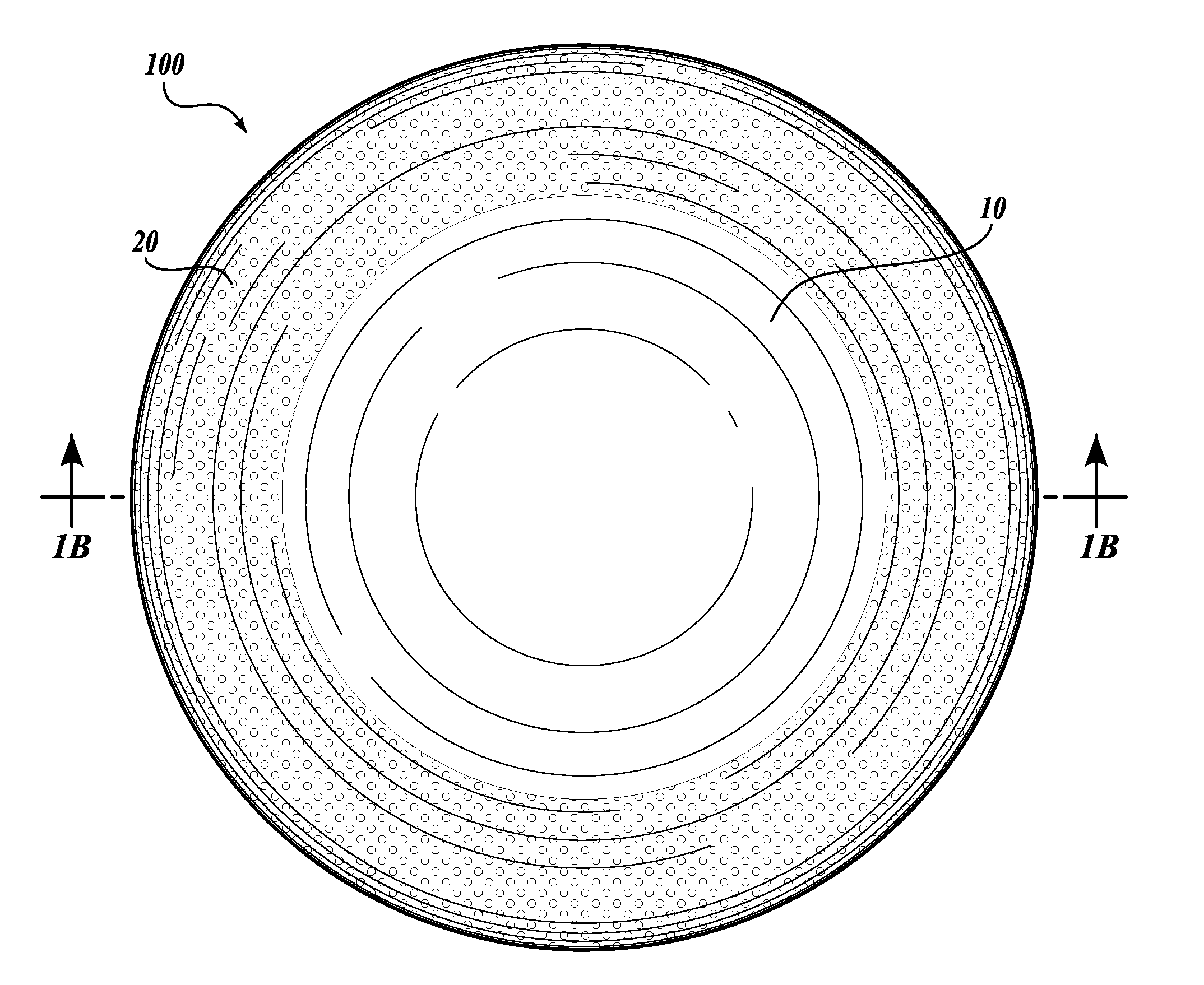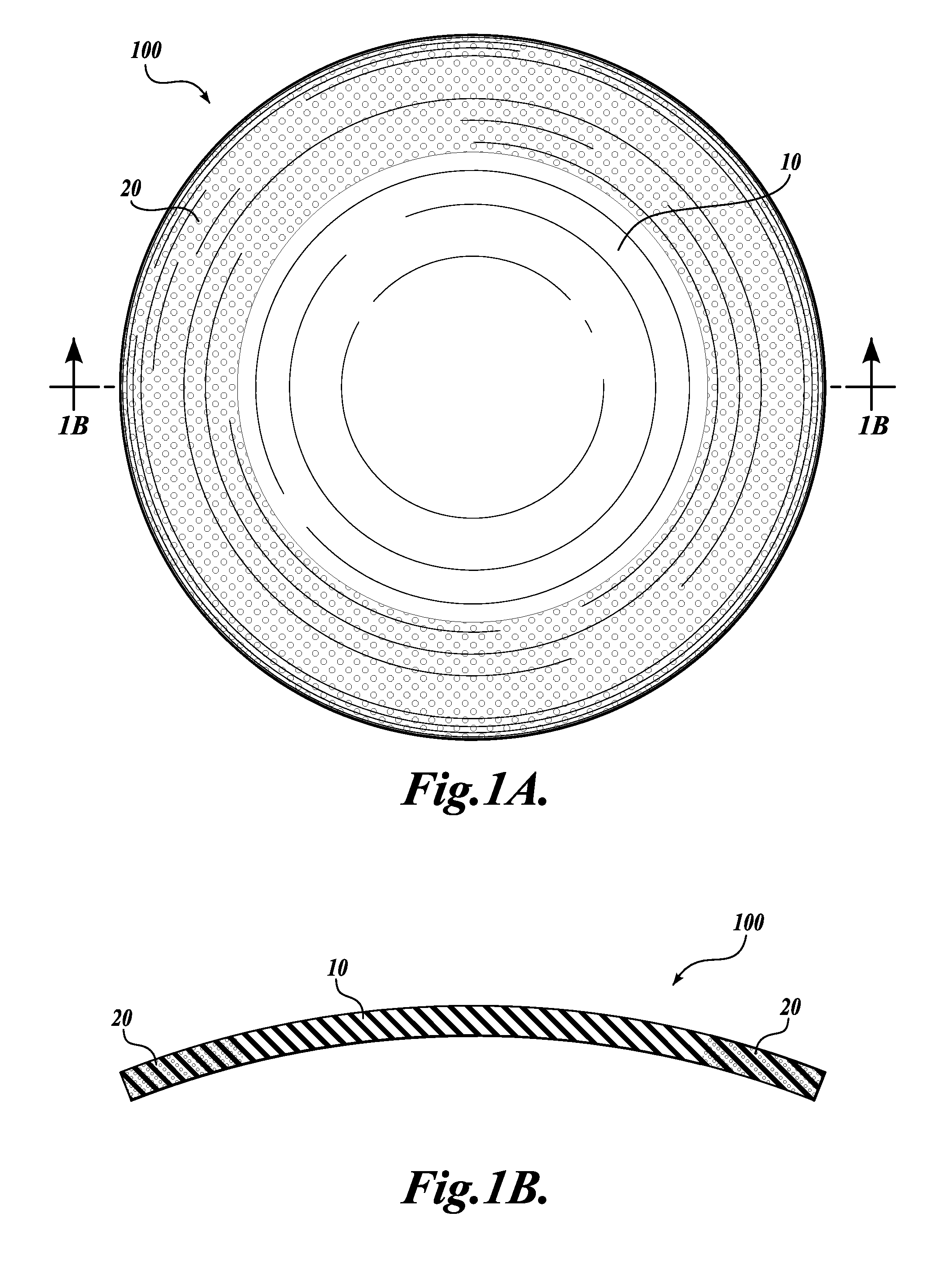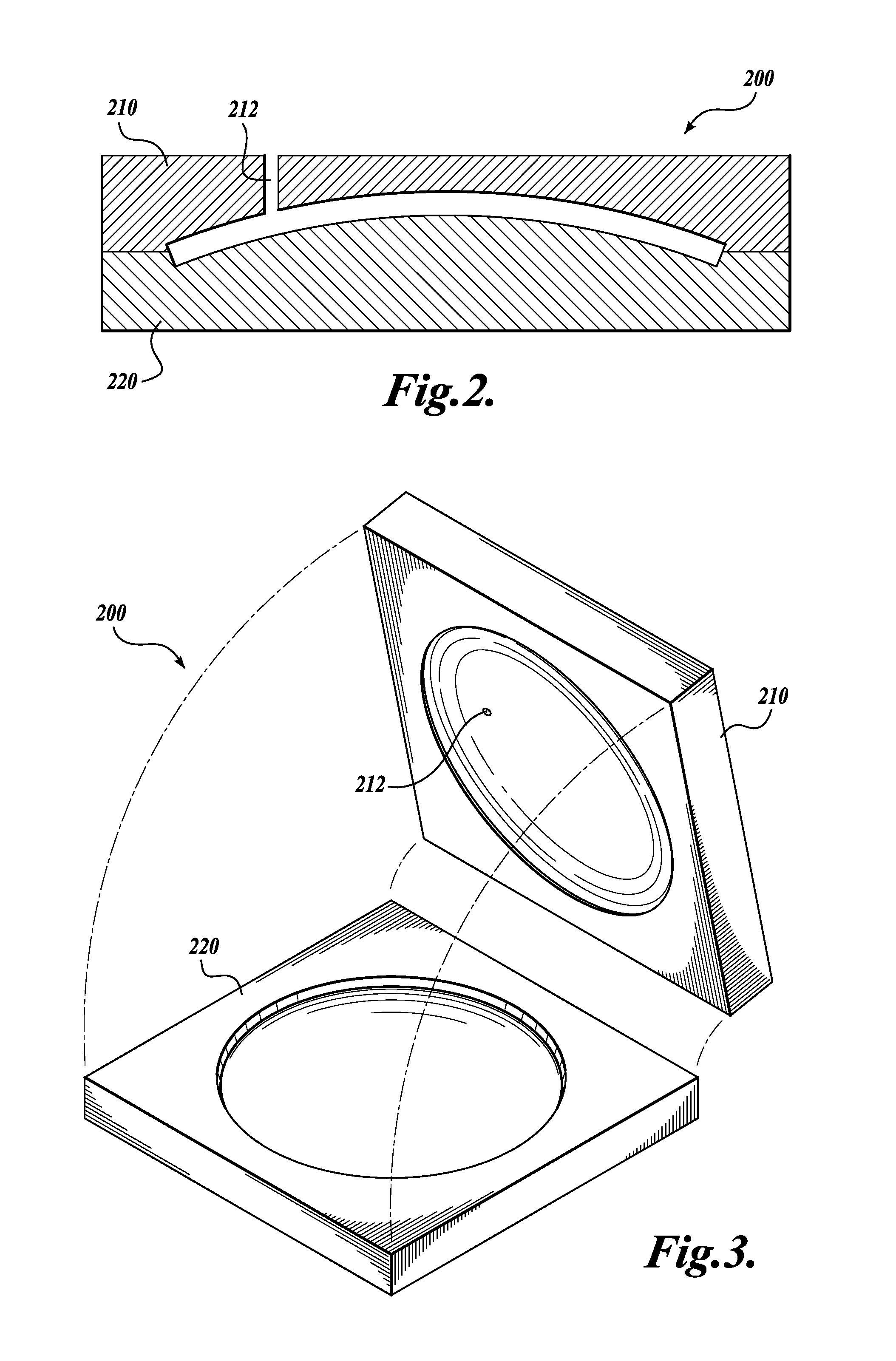Artificial cornea
a technology of artificial cornea and cornea, which is applied in the field of artificial cornea, can solve the problems of corneal blindness, limited availability of human donor tissue, and most corneal blind patients untreated
- Summary
- Abstract
- Description
- Claims
- Application Information
AI Technical Summary
Problems solved by technology
Method used
Image
Examples
Embodiment Construction
[0020]The present invention provides a one-piece artificial cornea as well as methods of making and using such corneas. Artificial corneas of the present invention offer, for example, reduced surgery implementation times, superior visual outcomes, and shorter recovery periods compared to artificial corneas presently employed. In addition, artificial corneas of the present invention do not rely on donor corneal graft tissue in their construction or implantation. As used herein, an “artificial cornea” is equivalent to a “keratoprosthesis.”
[0021]Accordingly, the present invention contemplates a keratoprosthesis, comprising: (a) a rigid transparent central core; and (b) a peripheral skirt comprising a porous hydrogel. In certain embodiments, a keratoprosthesis may be described as having a radially extended transparent central core that is defined by an annular peripheral skirt comprising a porous hydrogel (see, e.g., FIG. 1A).
[0022]In certain embodiments, the term “rigid” refers to a tr...
PUM
| Property | Measurement | Unit |
|---|---|---|
| Thickness | aaaaa | aaaaa |
| Pressure | aaaaa | aaaaa |
| Diameter | aaaaa | aaaaa |
Abstract
Description
Claims
Application Information
 Login to View More
Login to View More - R&D
- Intellectual Property
- Life Sciences
- Materials
- Tech Scout
- Unparalleled Data Quality
- Higher Quality Content
- 60% Fewer Hallucinations
Browse by: Latest US Patents, China's latest patents, Technical Efficacy Thesaurus, Application Domain, Technology Topic, Popular Technical Reports.
© 2025 PatSnap. All rights reserved.Legal|Privacy policy|Modern Slavery Act Transparency Statement|Sitemap|About US| Contact US: help@patsnap.com



